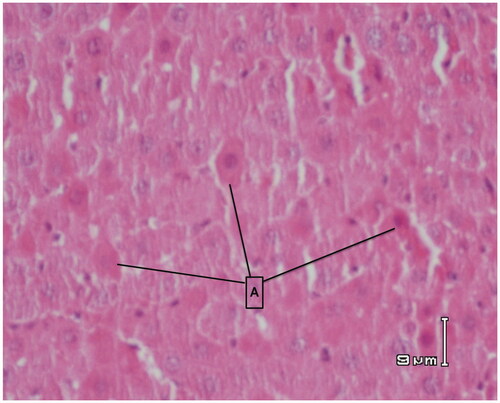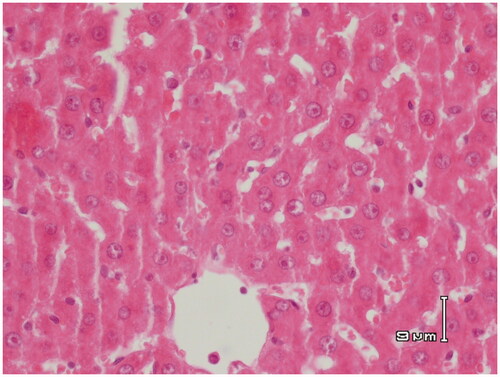Figures & data
Figure 1. Effects of rosmarinic acid (RA) administration on serum ALT and AST in control (Cont), RA 10 mg/kg-treated control (Cont + RA10), RA 50 mg/kg-treated control (Cont + RA50), RA 100 mg/kg-treated control (Cont + RA100), acetaminophen (APAP), RA 10 mg/kg-treated APAP (APAP + RA10), RA 50 mg/kg-treated APAP (APAP + RA50) and RA 100 mg/kg-treated APAP (APAP + RA100) groups (n = 7) at the end of experiment. The data are represented as mean ± S.E.M. *p < 0.05 and ***p < 0.001 (as compared to control group).
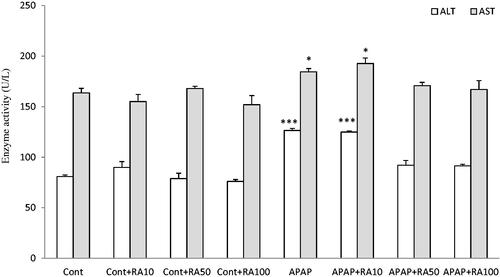
Figure 2. Effects of rosmarinic acid (RA) administration on serum albumin and total protein in control (Cont), RA 10 mg/kg-treated control (Cont + RA10), RA 50 mg/kg-treated control (Cont + RA50), RA 100 mg/kg-treated control (Cont + RA100), acetaminophen (APAP), RA 10 mg/kg-treated APAP (APAP + RA10), RA 50 mg/kg-treated APAP (APAP + RA50) and RA 100 mg/kg-treated APAP (APAP + RA100) groups (n = 7) at the end of experiment. The data are represented as mean ± S.E.M. ***p < 0.001 (as compared to control group).
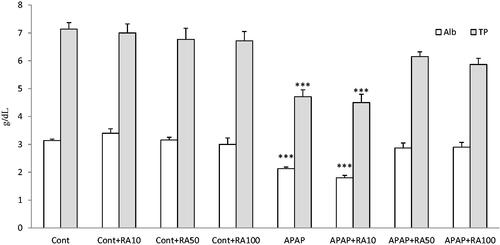
Figure 3. Effects of rosmarinic acid (RA) administration on the liver weight in control (Cont), RA 10 mg/kg-treated control (Cont + RA10), RA 50 mg/kg-treated control (Cont + RA50), RA 100 mg/kg-treated control (Cont + RA100), acetaminophen (APAP), RA 10 mg/kg-treated APAP (APAP + RA10), RA 50 mg/kg-treated APAP (APAP + RA50) and RA 100 mg/kg-treated APAP (APAP + RA100) groups (n = 7) at the end of experiment. The data are represented as mean ± S.E.M. *p < 0.05 and **p < 0.001 (as compared to control group).
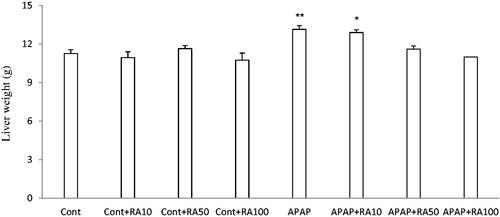
Table 1. Effects of rosmarinic acid (RA) administration on hepatic MDA, GSH, FRAP, GST and CYP2E1 activity in control (Cont), RA 10 mg/kg-treated control (Cont + RA10), RA 50 mg/kg-treated control (Cont + RA50), RA 100 mg/kg-treated control (Cont + RA100), acetaminophen (APAP), RA 10 mg/kg-treated APAP (APAP + RA10), RA 50 mg/kg-treated APAP (APAP + RA50) and RA 100 mg/kg-treated APAP (APAP + RA100) groups at the end of experiments (n = 7). The data are represented as mean ± S.E.M.
Figure 4. Paraffin sections stained by haematoxylin and eosin (H&E) for histopathological examination of liver tissues of rats as follows: (A) the control rats; (B) rats fed with RA (10 mg/kg); (C) rats fed with RA (50 mg/kg) and (D) rats fed with RA (100 mg/kg). Normal histological structures are depicted in these pictures.
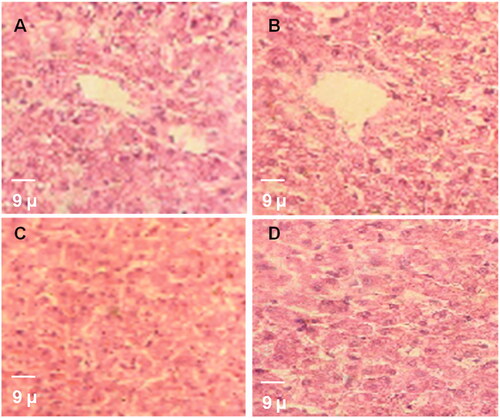
Figure 5. Paraffin sections stained by haematoxylin and eosin (H&E) for histopathological examination of liver tissues of rats treated with APAP (500 mg/kg). The arrows indicate haemorrhage in hepatic parenchyma. Circle shows inflammatory cell infiltrations and asterisks indicate hepatic cell necrosis.
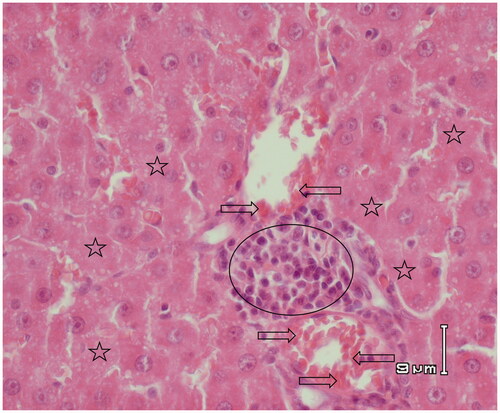
Figure 6. Paraffin sections stained by haematoxylin and eosin (H&E) for histopathological examination of liver tissues of rats treated with APAP (500 mg/kg) and RA (10 mg/kg). There are still some regions of injury induced by APAP. Circles show inflammatory cell infiltrations and asterisks indicate hepatic cell necrosis.


